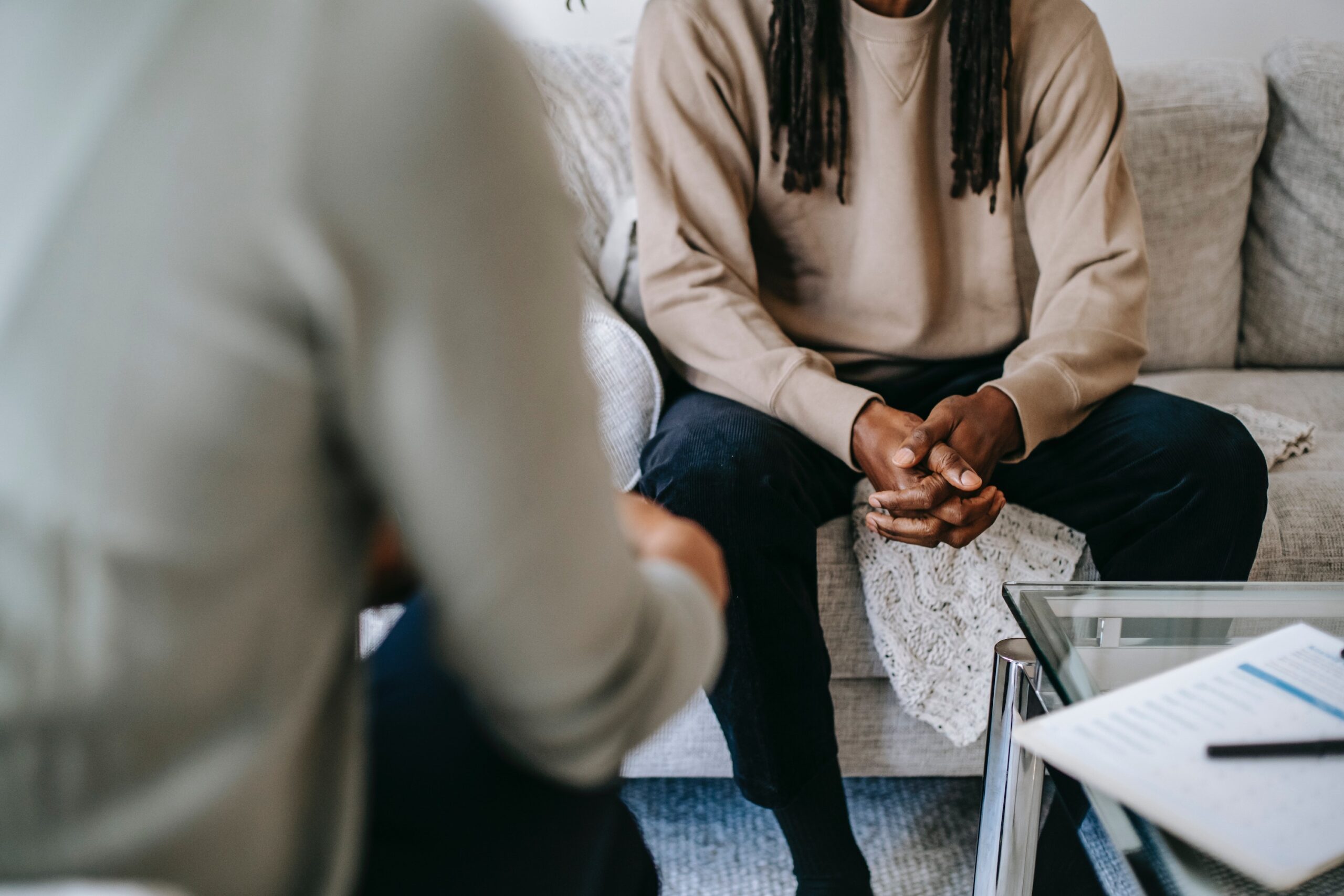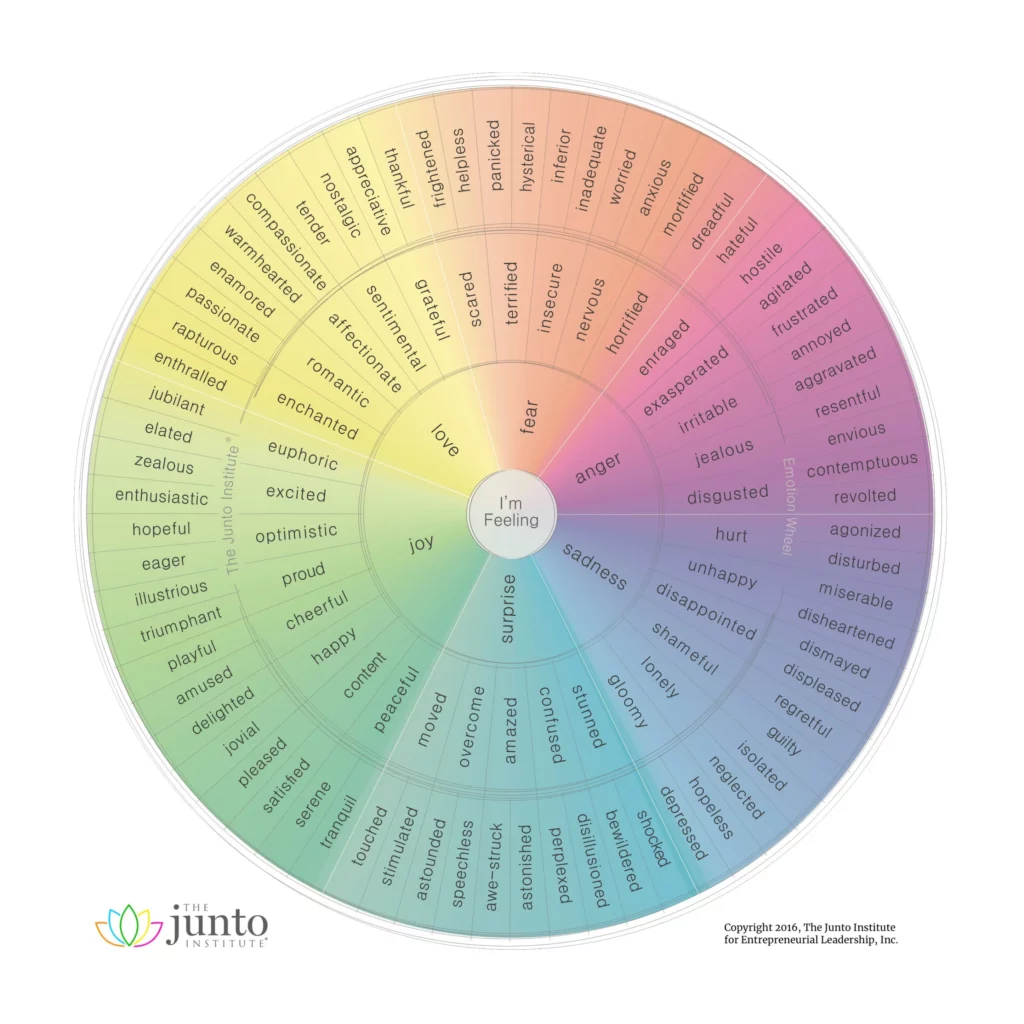
All my current successful relationships are based on one major thing, the emotions wheel.
In hindsight, it would not make sense that this small thing would dramatically change and improve my communal connections but here we are. In the past, like most neurodivergent queerfemmes, I was, of course, labeled “sensitive” or “too emotional”. The impact of the patriarchy and colonization continues to jump rope in all our spaces, and even in queer dynamics, you are likely to be shamed for [checks notes] voicing your emotions, especially those that convey your displeasure about another person’s actions i.e., a request for accountability. Each time I had this experience, I was immediately transported to a younger version of myself who was silenced and dismissed because the folks around me did not have the emotional capacity to articulate what was happening to them, much less, a tiny person just learning the emotional underpinnings of life. Imagine my moment of realization that I was acting out my childhood wounds for my need to be heard, seen and held by my family in my friendships and relationships. Please do not imagine actually; each time I was shattered, bawling and feeling like the world was ending, think 90’s Hot Girl having a lifetime dream ripped from her perfectly manicured nails. How EVER will she recover?!
It was by divine timing and through the introduction of [drumroll] the Emotion Wheel. I was introduced to the wheel about two years ago in a session with my advisor (think about someone who has psychosocial support tools and knowledge, then incorporates somatic exercises, creative activities, African spirituality and indigenous ways of being). She kept asking me how I felt and I only had access to the feelings of hurt and anger as my major emotions. She validated my emotions and helped me articulate exactly what things caused me to feel these particular emotions then said, “what exists under those emotions?”
Excuse me, you mean there’s more?! And so, to help me to better understand what other emotions possibly existed, I got homework. She referred me to one emotion wheel and encouraged me to identify the word that felt like what my body was experiencing at any moment. Now? All my friends have been given an emotion wheel and it’s shared it with every new person who wants to be in community with me. We are constantly denied the opportunity to sit with our feelings to uncover the primary, secondary and accompanying emotions that arise from an experience to focus on the next thing but we never have time to explore our inner dialogue and what informs it. We always intend to address our emotions “next time” or to organize them based on priority. Who wants to handle difficult emotions now? Hardly anyone, but if not now, then when?
The moment I started using that wheel in all my exchanges with the most important people in my life, we started to deepen our relationships. We were better able to articulate what was happening internally, which helped us to take accountability for our roles in the moment. I have a photo of my wheel on my phone and whenever I feel lost for words, I say to my friend: “wait, let me get my emotions wheel.” and then I am able to clearly state my emotions. Your brain in a heightened emotional state does not want logic or solutions, your brain as a child comes into effect and what did little you need when they were emotionally charged? Was it to be held, validated, cared for, fed, seen, heard? Those are the needs that are presented in those moments. It may be difficult to get to this point of awareness; there’s a lot of digging necessary in order to find our wounded child and care for them.
One of the best ways to do so is to give them language to articulate what they need. It’s always a joy to have a friend telling me that they are feeling something then say “wait, let me get my emotion wheel.” then proceeds to list out all the possible emotions they feel. And very often, what happens is the vulnerability that this process allows then provides an opportunity for us to practice listening, understanding and identifying how we want to proceed. In an instance where actions of either party impacts the other person, we are able to identify the emotion, the moment or action that led to the discovery, acknowledge our role, apologize and together create a plan to limit the reoccurrence of this. As a result of this process, we find ourselves in conversation saying: “I remember you had said you did not like this.” and we’re able to limit being callous and careless with each other. To be seen, to be heard, held and validated because of the conscious choice to show up and do this work? It has changed the way my community and I practice accountability, kindness, forgiveness and apologizing.
Practicing accountability from an understanding of our emotions is essential because we, as humans, do not experience the world from a place of logic first. The body’s chemical reaction happens before we attribute reasoning and intellectualization to an experience. Social conditioning has forced us to intellectualize and rationalize a feeling rather than experiencing a feeling. This is the reason we get upset when someone tells us to “calm down” during an emotionally charged time. Your body and mind are processing as they were naturally made to do. We learn cognition through experience and life. When you acquire the ability to allow the experience of an emotion, you are able to identify what caused it, both in the moment and our childhood wounds, and eventually, how to self-soothe. The action of self-soothing is providing yourself with the response that you would have wanted to be given by caregivers earlier in your life but did not receive; now, you are soothing both your child self and your adult self who is affected, still, by childhood trauma. This might be difficult because again, social conditions dictate that you should be over the lack of support in childhood because you are now an adult. If you think of self-soothing as a treatment for a wound, you will recall that you would get hurt as you navigated through life with knowledge and skills you learned at each stage. Some hurts would be small cuts, some would be lacerationswounds, or broken bones, all requiring a different treatment type and the processing of your emotions is no different.
Our feelings are absolutely our own and therefore, our responsibility to acknowledge, hold and express. We can also hold the truth that without the language and space to do so, we will not be able to access the healing we might desire. In this way, we find the tools that can help us on this healing journey towards nurturing our inner child and the current version of ourselves. It is not the job of a singular person in isolation, but someone needs to start the job and if not you, then who? I look forward to your exploration of the emotion wheel as a tool towards practicing accountability, being in community and accessing healing.
